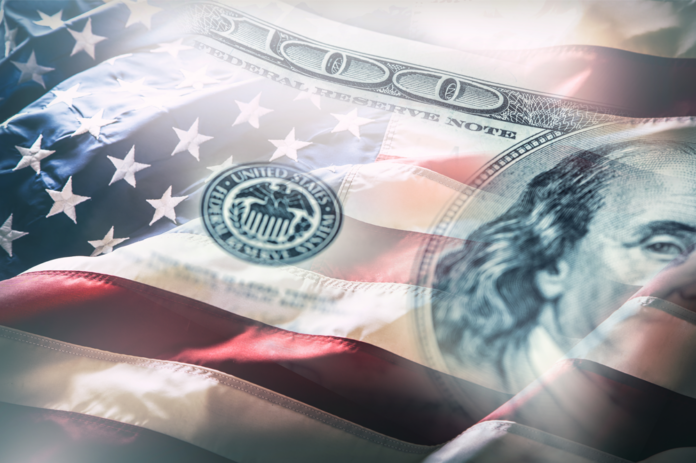The U.S. dollar surged on Wednesday, where it is poised to score its biggest one-day gain since March 2020, as Donald Trump moved closer to victory for the White House, while a Republican sweep in Congress looked possible.
The dollar index, which tracks the greenback against a basket of six other currencies, rose 1.4% to 104.737, reaching a four-month high of 105.237 earlier in the session.
Dollar Soars on Trump’s Return to the U.S. Presidency
Republican candidate Donald Trump declared himself the winner of the U.S. presidential election early Wednesday, though the race has not yet been officially called. Trump claimed his victory provides a “powerful mandate” to implement his various economic policies.
The Republican Party has also gained a majority in the Senate and appears set to win the House of Representatives as well. A Republican-controlled Congress would ease the path for Trump to enact substantial policy changes, with his tariff and immigration policies seen as inflationary by analysts, thus strengthening the dollar.
“Trump trading is in full swing as the U.S. vote count continues,” analysts at ING noted in a report. “If the growing consensus for a Republican clean sweep materializes, we expect a prolonged period of dollar outperformance.”
The Federal Reserve concludes its meeting on Thursday, with markets anticipating another rate cut—this time of 25 basis points, rather than the more significant reduction seen in September.
Euro Declines
In Europe, EUR/USD plummeted nearly 1.5% to 1.0762, hitting its lowest level since early July, as the possibility of Trump’s second term in office became more real.
“The euro has proven to be the weakest of the G10 currencies overnight, and you can see why,” ING added. “The expectation is that Trump will broaden his China-centric trade policies in a second term, at a time when the eurozone, especially Germany, is grappling with stagnant growth. Plans to export out of stagnation are no longer a viable option for the eurozone.”
This euro weakness persisted despite a mild rebound in Germany’s services sector. October business activity posted a three-month high, with the PMI rising to 51.6 from 50.6 in September—the first acceleration in growth in five months.
GBP/USD dropped 1% to 1.2917 as the Bank of England is expected to implement another 25 basis point rate cut on Thursday. This would mark its second reduction following a cut in August, the first in four years. A cut was almost certain before last week’s budget, but higher-than-expected government spending and borrowing have introduced some uncertainty.
Asian Currencies Grapple with Trump’s Policy Stance
USD/JPY surged 1.6% to 153.95, reaching over three-month highs as Trump’s victory appeared imminent. Yen weakness has kept traders cautious about potential government intervention in the currency markets, given recent warnings from Japanese officials.
USD/CNY climbed 0.8% to 7.1579, with the yuan weakening as Trump reiterated his intent to impose heavy tariffs on China if re-elected, posing a challenging outlook for the Chinese currency.
This week’s focus will also include a meeting of China’s National People’s Congress, where the government is expected to approve increased fiscal spending for the years ahead.
AUD/USD fell 0.9% to 0.6579, as Australia faced potential economic strain due to Trump’s proposed tariffs on China, given Australia’s close trade ties with the region.



